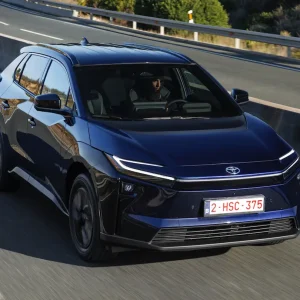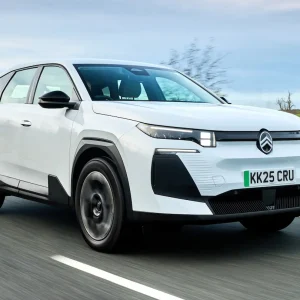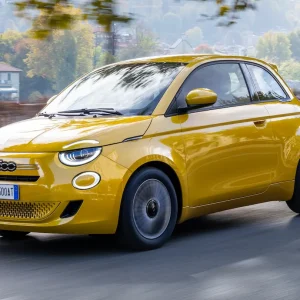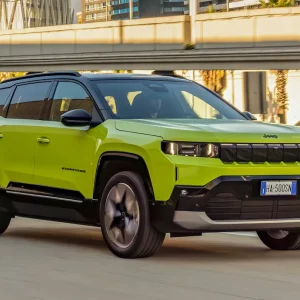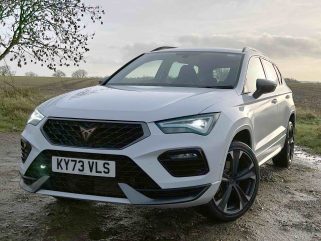
Cupra became a manufacturer, rather than a Seat performance sub-brand in 2018. It burst on to the UK market first with a Cupra-badged version of the Seat Ateca medium SUV, with the same 300hp 2.0-litre turbo engine from the Golf R. Like the Seat, it received a mid-life facelift in 2020, along with more versions. With all the focus it seems on its newer models, such as the Formentor and Born EV, can the latest Cupra Ateca make its mark alongside more modern opposition?
The original Seat Ateca was launched in late 2016. The Cupra version always had a sportier look from launch in 2018, but like the Seat, in the 2020 facelift, it got tougher looking front and rear bumpers, new lights, and new front grill, and wheel designs. There are newer and fresher models in the mid-size SUV class, but the Cupra’s basic design still manages to look contemporary and attractive, thanks to its sharp detailing. Inside, sports seats and the faux carbon fibre, Cupra logo’d, airbag cover aside, we could be driving a standard Seat Ateca. With plenty of soft-touch plastics and Alcantara with copper stitching for the seat trim, quality is good. The interior design, in our opinion, feels its eight years on sale. We like the physical controls for the ventilation, but the design trend for newer Cupra models is to fit a bigger screen, with the controls hidden in a menu there – which you could argue is tidier. Talking of the Cupra’s infotainment, the standard 9.2in touchscreen fitted here looks and feels small, it’s also difficult to operate and the graphics are hard to read.
Still, the driving position is comfortable – even for the tallest, with plenty of headroom. The one-piece standard sports seats are supportive, with space also good in the rear, although there’s not really room for three. However, there is a practically shaped 485-litre boot.
On top of the disappointing infotainment, we also felt there were some odd anomalies with the specification of our entry-level V1 test car. For example, 19in alloy wheels, keyless entry and start, plus a heated steering wheel are all welcome. But where are the heated seats to go with the steering wheel?
On top of being in entry-level V1 spec, our Ateca test car was also fitted with the 148hp 1.5 TSi petrol engine mated with seven-speed DSG transmission.
At 9.3 seconds, 0-60mph time seems slow when compared to EV models, and there’s no doubt that the acceleration feels fluffy even with the slick DSG automatic gearbox. So, you must work this engine hard for it to perform – where it becomes noticeably louder. There’s also the decent 40+mpg figure to consider, but the plug-in version of the Formentor will be cheaper to run thanks to its lower BIK figure. Also, despite there being a choice of driving mode, these seem to make little difference to the drive.
We had the chance to compare both the Cupra and Seat versions of the Ateca back-to-back, and it’s the Cupra’s stiffer, sportier set-up that feels more dynamic. But, even on the modest, standard 19in alloy wheels there’s a harder-edged feel to the ride. Don’t get us wrong, most of the time this Ateca strikes a good ride and handling balance, which works well with the feelsome steering – in fact, we’d go as far as to say this set-up betters the standard Ateca’s in our opinion.
The Cupra makeover of the Ateca doesn’t hinder the standard car’s practicality, making it feel more special and is competitively priced. But the ST version of our favourite compact SUV the Ford Puma, offers more driving thrills, decent practicality, feels more modern and it’s cheaper. The Formentor should also be given serious consideration against the Ateca, with its more modern interior, comfier ride, and plug-in hybrid option.
Cupra Ateca V1 1.5 TSI 150 PS
P11D: £35,345
Residual value: 48%
Depreciation: £18,370
Fuel: £9,735
Service, maintenance and repair: £2,155
Cost per mile: 50.43p
Fuel consumption: 41.5mpg
CO2 (BIK %): 153g/km (35%)
BIK 20/40% a month: £206/£412
Luggage capacity: 485 litres
Engine size/power: 1,498cc /150hp

